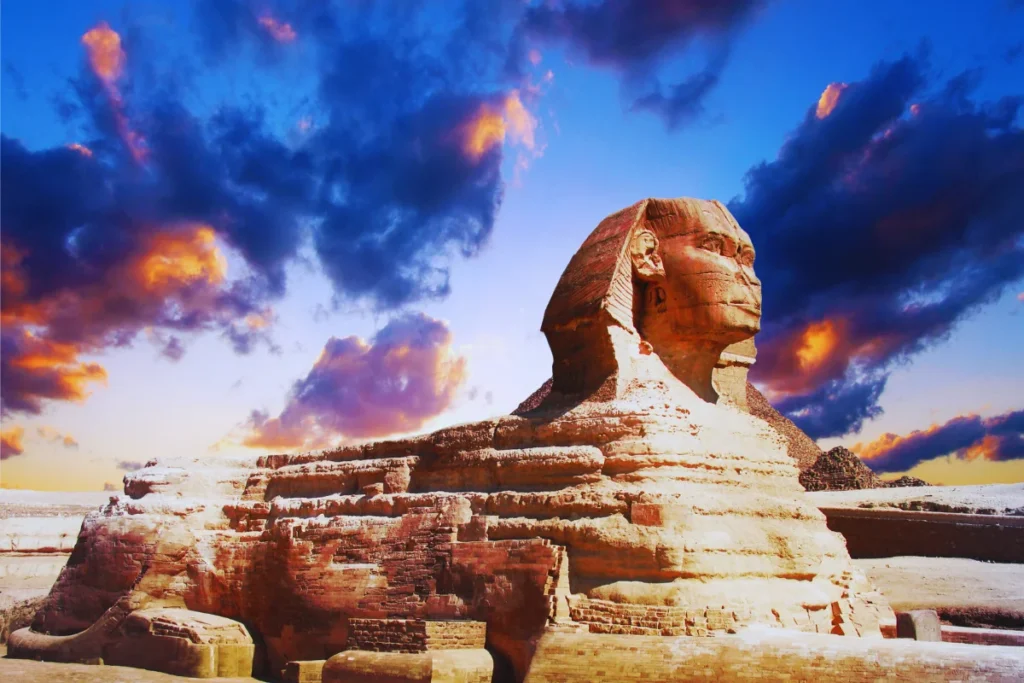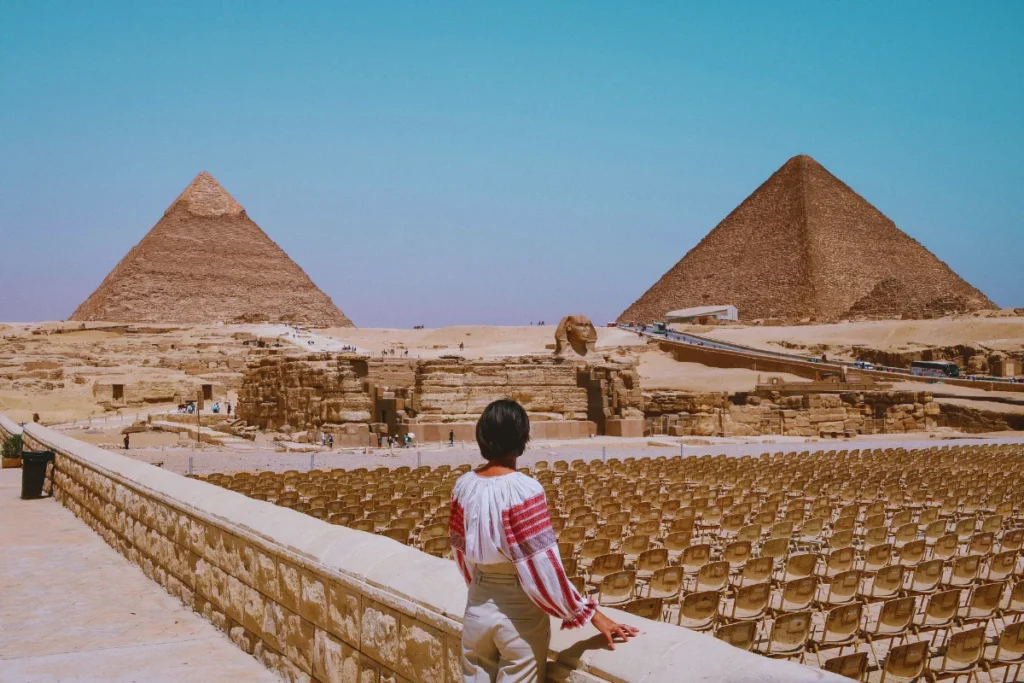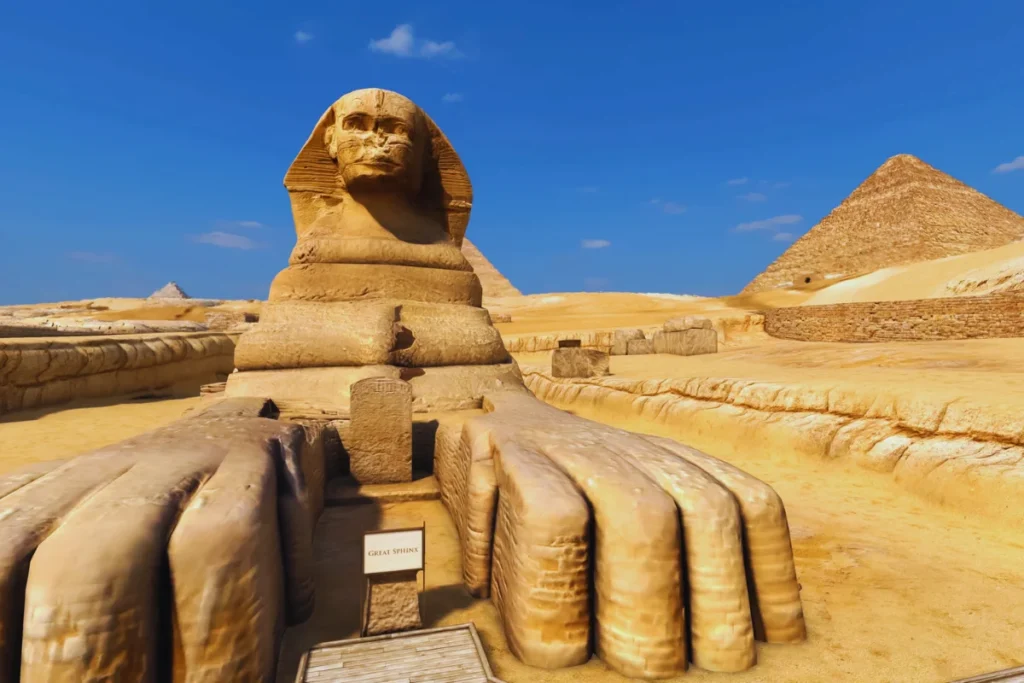The Pyramids of Egypt are some of the most incredible structures in human history. Built thousands of years ago, they still attract millions of visitors and spark the curiosity of travelers, historians, and archaeologists from all over the world.
The most famous of these pyramids is the Great Pyramid of Giza, but Egypt has more than 100 pyramids scattered across its deserts. These massive stone structures were tombs for pharaohs and are lasting symbols of the power, wealth and belief systems of ancient Egypt.
What makes the pyramids so fascinating is not just their size and beauty, but the mysteries surrounding their construction, purpose and preservation. From architectural achievements to strange alignments with the stars, there’s a lot to uncover.
In this blog we’ll explore 10 amazing facts about the pyramids that will make you see why they still amaze us today.
Fact 1: The Great Pyramid Was the Tallest Man-Made Structure for Over 3,800 Years
The Great Pyramid of Giza was the tallest man-made structure on Earth for more than 3,800 years. Originally it was around 146.6 meters (481 feet) high. Over time erosion and the loss of its outer casing stones has reduced it slightly to about 138.8 meters (455 feet) but it’s still above the desert.

For nearly 4,000 years no building in the world was taller than it. This record wasn’t broken until the 14th century when the Lincoln Cathedral in England was completed.
Its scale and precision is mind blowing especially considering the technology they had 4,500 years ago. The fact that it held the record for so long shows just how advanced the ancient Egyptians were in engineering and design.
Fact 2: No Mortar Was Used in Their Construction
The ancient Egyptians built the pyramids without using any mortar between the stones. Each massive block was cut and placed so precisely that the pieces fit together tightly and securely.
Some of the stones weigh several tons, yet they were positioned with such skill that very little space exists between them. In many areas, not even a sheet of paper can fit into the joints.
To this day, experts are unsure exactly how they achieved such precise cutting and placement. The technique remains one of the great mysteries of ancient construction, showing just how advanced their engineering was.
Planning a trip to Egypt to explore the Pyramids up close? Stay connected from the moment you land with our hassle-free, affordable Egypt eSIM — perfect for tourists who want fast data without roaming fees.
Fact 3: The Pyramids Were Originally Covered in White Limestone
When first completed, the pyramids looked very different from how they appear today. They were covered in smooth, polished white limestone casing stones that gave them a shiny surface.
These stones reflected sunlight so well that the pyramids would have glowed under the Egyptian sun. From far away, they would have looked like massive, bright structures rising from the desert.

Over time, many of these casing stones were removed or damaged due to earthquakes and were later used in building projects in Cairo. What remains now is the rough inner core of the pyramids, but the original smooth outer layer is a reminder of how dazzling they once were.
Fact 4: The Construction Method Is Still Debated Today
Historians and engineers have long debated how the pyramids were built. Since the ancient Egyptians left no clear instructions, several theories have developed over time.
One popular idea is that workers used massive ramps to move the heavy stones into place. Others suggest the use of wooden levers, sledges, and large teams of laborers.
Archaeological evidence shows that the builders were not slaves but skilled workers who lived in nearby villages. These laborers were well-fed and trained, showing that the construction was a national effort by a proud and organized society.
Fact 5: The Great Pyramid Has Hidden Chambers
Modern scanning technology has revealed that the Great Pyramid of Giza still holds secrets. In recent years, researchers using advanced imaging tools discovered hidden voids and unexplored chambers inside the structure.
One large empty space above the Grand Gallery has puzzled experts. Its purpose is still unknown, and no one has been able to access it yet.

These discoveries show that we are still learning about the pyramid’s design. Some believe these secret areas could have been used for storage, hidden passages, or even symbolic meanings linked to the afterlife.
Fact 6: The Pyramids Were Part of a Larger Complex
The pyramids did not stand alone in the desert. Each one was part of a larger complex that included temples, long stone causeways, and buildings for priests and workers.
These structures played a role in religious ceremonies and were connected to the belief in life after death. The pyramid itself was a tomb, but the entire complex supported the king’s journey to the afterlife.
Worker villages nearby show that thousands of people lived and worked on these sites, proving that building a pyramid was a massive, organized effort that involved much more than just stacking stones.
Fact 7: Millions of Limestone and Granite Blocks Were Used
The Great Pyramid alone is made up of an estimated 2.3 million stone blocks. Most of them are limestone, while some chambers include heavy granite blocks. On average, each block weighs about 2.5 tons, and some granite pieces weigh up to 80 tons.
Moving and placing these massive stones was a huge challenge. Experts believe the builders used sleds, wooden rollers, and manpower to transport the blocks. The nearby Nile River also played an important role. During flood season, it made it easier to move materials closer to the site by boat.
The sheer scale of the project shows how advanced and organized ancient Egyptian society was at the time.
Fact 8: The Pyramids Have Withstood Earthquakes and Time
The pyramids have survived for over 4,500 years. They have faced earthquakes, harsh weather, and centuries of erosion. Despite this, they still stand tall, a testament to the strength of their construction.
The pyramid’s shape, with a wide base and a pointed top, helps distribute weight evenly. This design gives it great stability, making it more resistant to natural damage than many modern buildings.
It is amazing how a structure built so long ago continues to stand while some newer buildings fail in much shorter time spans.
Fact 9: The Pyramids Attract Millions of Visitors Annually
Today, the Egyptian pyramids remain one of the most visited landmarks in the world. Every year, millions of tourists travel to Giza, which is located just outside of Cairo, to see these ancient wonders up close.
Visitors come to admire their size, take guided tours, and explore the surrounding temples and museum sites. If you plan to visit, try to arrive early in the morning to avoid crowds and the midday heat. Wearing comfortable shoes and bringing water is also a good idea.
The pyramids are not just historical landmarks. They are a major part of Egypt’s tourism and a symbol of human achievement.
Final Thoughts
The Pyramids of Egypt continue to amaze people around the world with their scale, mystery, and endurance. Built over 4,500 years ago, these monuments stand as a powerful reminder of ancient Egypt’s architectural brilliance and deep spiritual beliefs. From their hidden chambers and polished limestone casing to the unanswered questions about their construction, each detail adds to their timeless fascination.
Visiting the pyramids in person is an unforgettable experience, but even learning about them from afar offers a window into one of history’s greatest civilizations. They are more than just tourist attractions, they are a connection to the past that still sparks curiosity in the modern world.
If you enjoyed learning these incredible facts, feel free to share this post with fellow travel lovers or history buffs. Drop a comment below with your favorite pyramid fact or a personal travel story. And don’t forget to explore our other travel content for more amazing destinations and ancient wonders.
